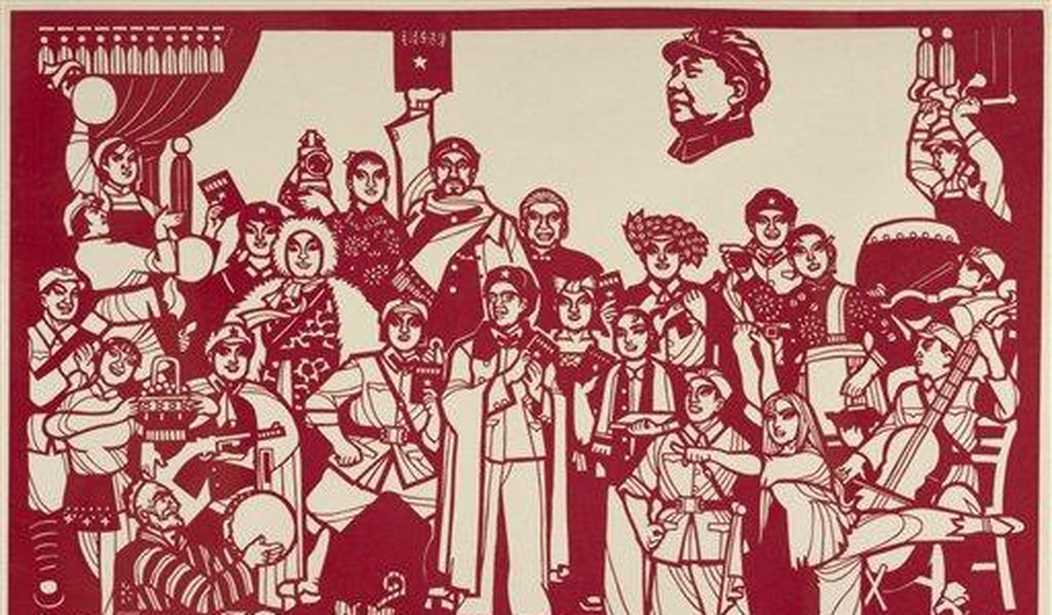If you’ve ever encountered the hordes of international Chinese tourists (they’ve overtaken Bangkok in recent years, thanks to explosive middle-class growth in the billion-plus population), you will have noted their horrendous personal habits and general lack of civility.
They spit. They grunt. They slurp. They cut in line (in the rare event that there actually is a discernible line at a grocery store checkout or ticket line). They smoke in non-smoking areas, including on the toilet. They also have a strange habit of hoisting themselves onto the toilet rim and squatting to defecate, which makes a mess.
The Beijing airport bathrooms, if you’ve been unfortunate to pass through on a connecting flight, are a cesspool of fecal matter and stale cigarette smoke.
Sometimes, they don’t even bother to visit the bathroom. Why make the extra effort when a sidewalk will suffice? Vice explains:
Outside the Louvre in Paris, there’s a sign in Mandarin which tells visitors not to defecate in the surrounding grounds. This sign is only written in Mandarin Chinese. No other nationality, it appears, needs to be reminded where it is and is not appropriate to sh*t in the vicinity of metropolitan France’s art museums.
In short, the Chinese tourist’s behavior is largely indiscernible from feral hogs, except that sometimes he communicates verbally, however artlessly.
It wasn’t always this way.
Once upon a time, prior to the reign of Mao that starved and killed people by the tens of millions, the Chinese were largely Confucians — subscribers to a belief system that emphasizes the Golden Rule and other tenets of an enlightened civilization. (China is the oldest continuous civilization in the world.)
To purge Chinese society of undesirable elements and solidify his chokehold on power, Mao targeted what the communist party termed the “four olds”: Old Ideas, Old Culture, Old Customs, and Old Habits.
The idea was that traditional Chinese culture was incompatible with communist doctrine. More importantly, though, Chinese culture didn’t square with the practices of the new totalitarian government — which very often had little to do with ideology, in fact, and much more to do with the exercise of raw power using communist utopianism as the excuse.
Related: The American Republic, the British Monarchy, and the Sense of the Sacred
Angela Stanzel, writing for the Asia Research Institute, explains the mechanics of the Cultural Revolution:
Teachers, officials, intellectuals, and cadres were persecuted, humiliated in public, beaten, and tortured. Universities and schools had to shut down; theaters and films were banned and books destroyed if they did not comply with official propaganda. The development of the society stagnated for around a decade, particularly in the fields of art, literature, science, research, and education. Allegedly up to 13 million Red Guards destroyed as much as they could, including numerous temples, and shrines…. Art, books, newspapers and the Internet are subject to increasingly severe state censorship; religious beliefs, traditions, and customs are allowed provided they do not conflict with the principles of the Communist Party or appear to be a threat to the state and society. [emphasis added]
What crept in to dominate Chinese civil society following the orchestrated destruction of its millennia-old culture was a sort of grayscale, globalized monoculture obsessed with materialism, and deprived of any social or spiritual nourishment that sustains a culture in the long term as well as the more polished behavior that such nourishment breeds.
There are obvious parallels here for anyone in the West who is paying attention to the culture war — namely, the destruction of the “Olds” for the sake of social engineering.










Join the conversation as a VIP Member